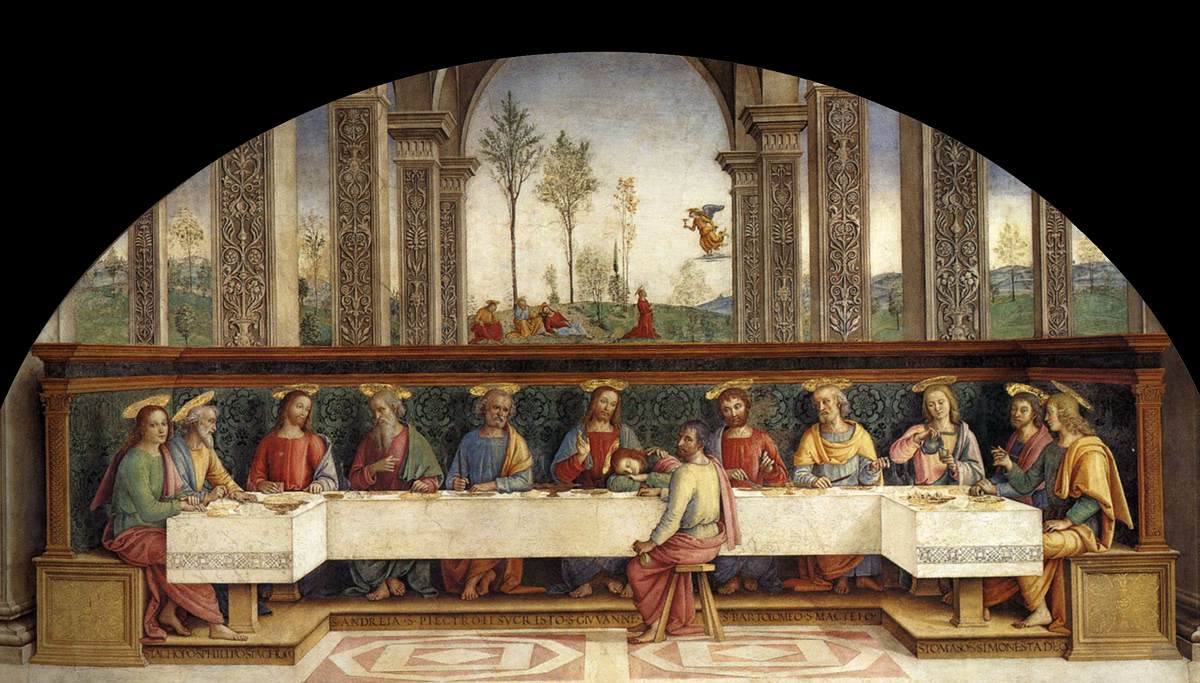The Last Supper and Baxandall
7:00 AM |
| Perugino, The Last Supper, 1496 |
“The Effective unit of the stories was the human figure. The figure’s individual character depended less on its physiognomy—a private matter largely left for the beholder to supply, as we have seen—then on the way it moved. But there were exceptions to this, and particularly the figure of Jesus.” (Baxandall 56)
The fifteenth century brought about an exciting new way to
look at art. The times of Giotto and Duccio evolved into the more anatomically-correct
renditions of Raphael and Perugino. Including them, the architectural front was
led by a certain Michelangelo and Donatello. However, among so many changes to
art, the depictions of Jesus got more intricate, but maintained the same aura
as its predecessors.
Perugino’s Last Supper depicts this exactly. Perugino, a
mentor to Raphael, painted many well-known (and well painted) scenes from the
bible. In particular, his last supper shares many characteristics with those
painted in the past, but also include some features unique to this piece. For
starters, he has one of the few Last Supper pieces that include a view of the
outside. In the last supper itself, Perugino uses techniques previously
administered by Duccio and gives Jesus
his usual, forgiving facial expression as he looks upon the table, awaiting his
demise.
Baxandall says it best when he says “The individual
character depends less on its physiognomy then on the way it moved.” However,
he is further correct when he says that the only exception is Jesus. In almost
all depictions of Jesus, he gives off a serene sense of softness and untold
grace. His lack of movement in the paintings is one of the only laws of art
that stick through the time of the “Old Masters” (Giotto and Duccio) into the masters
of the fifteenth century.
0 comments